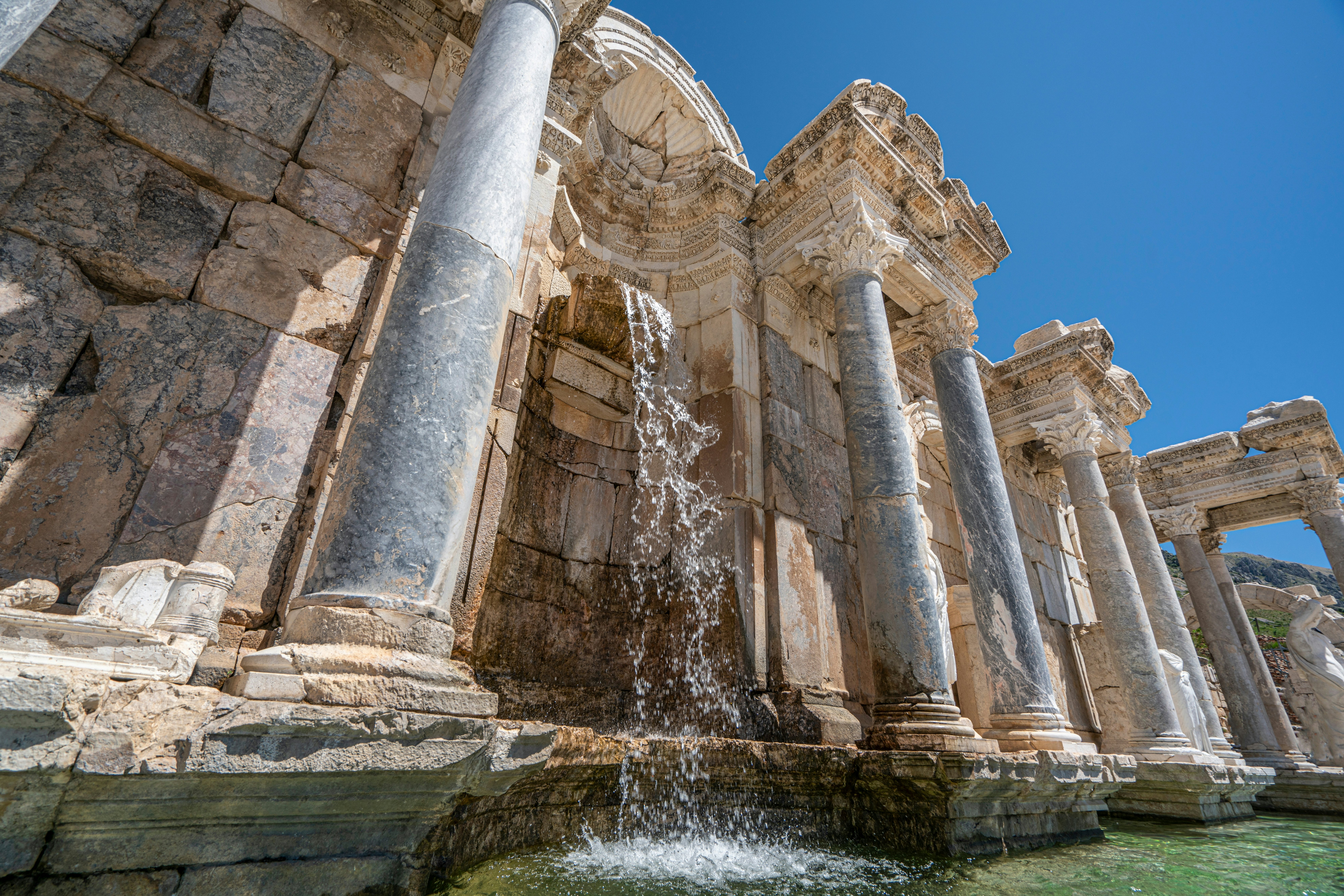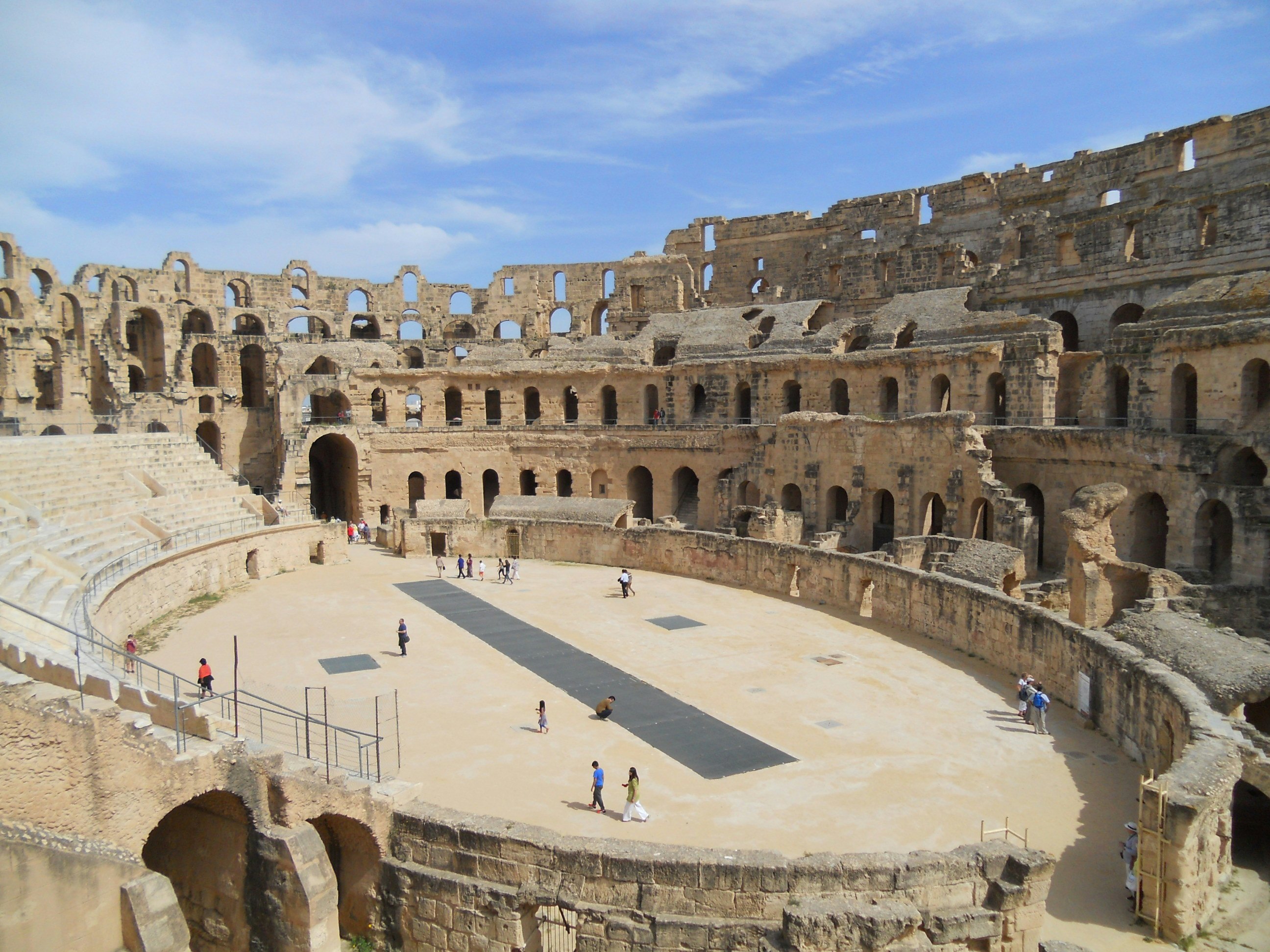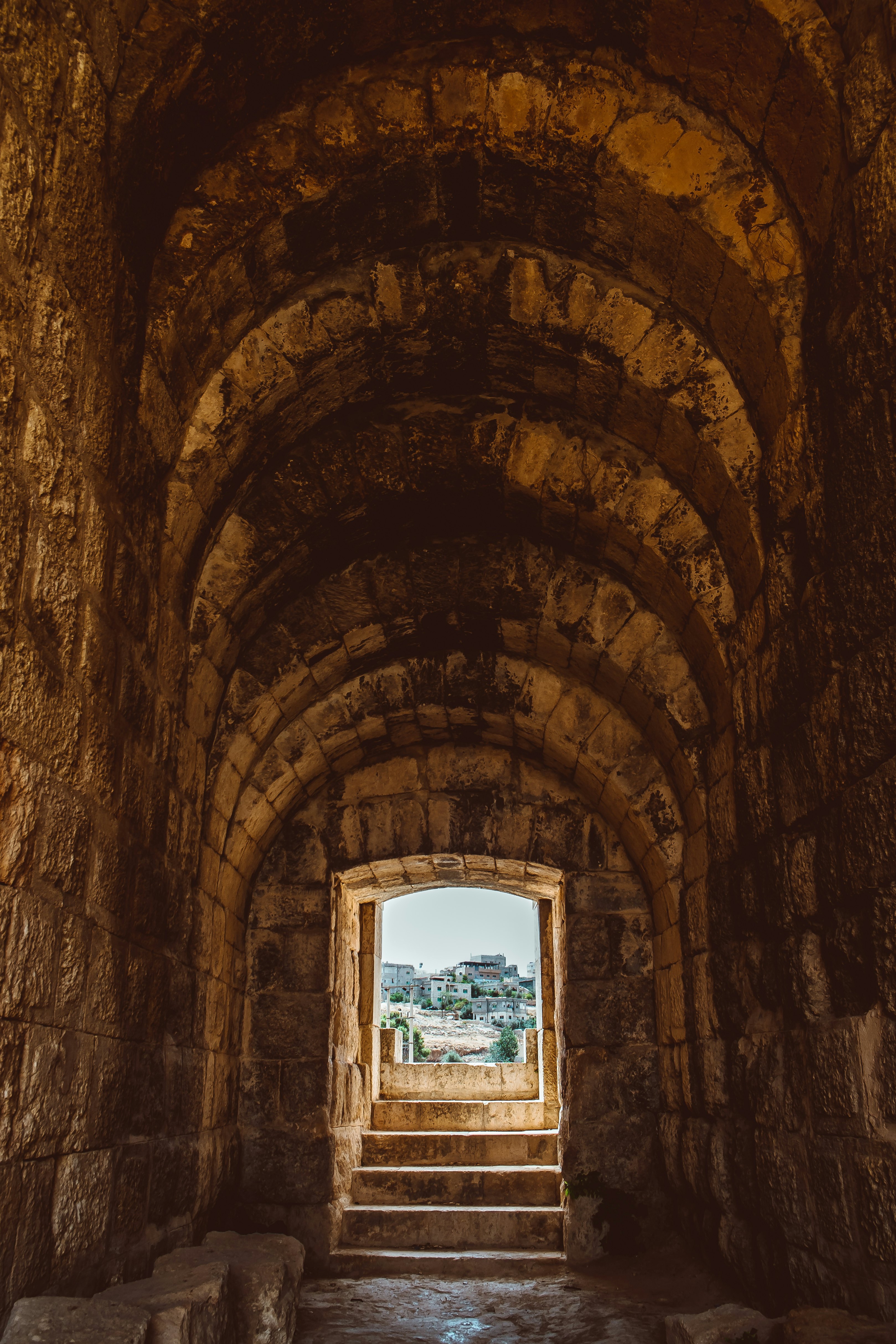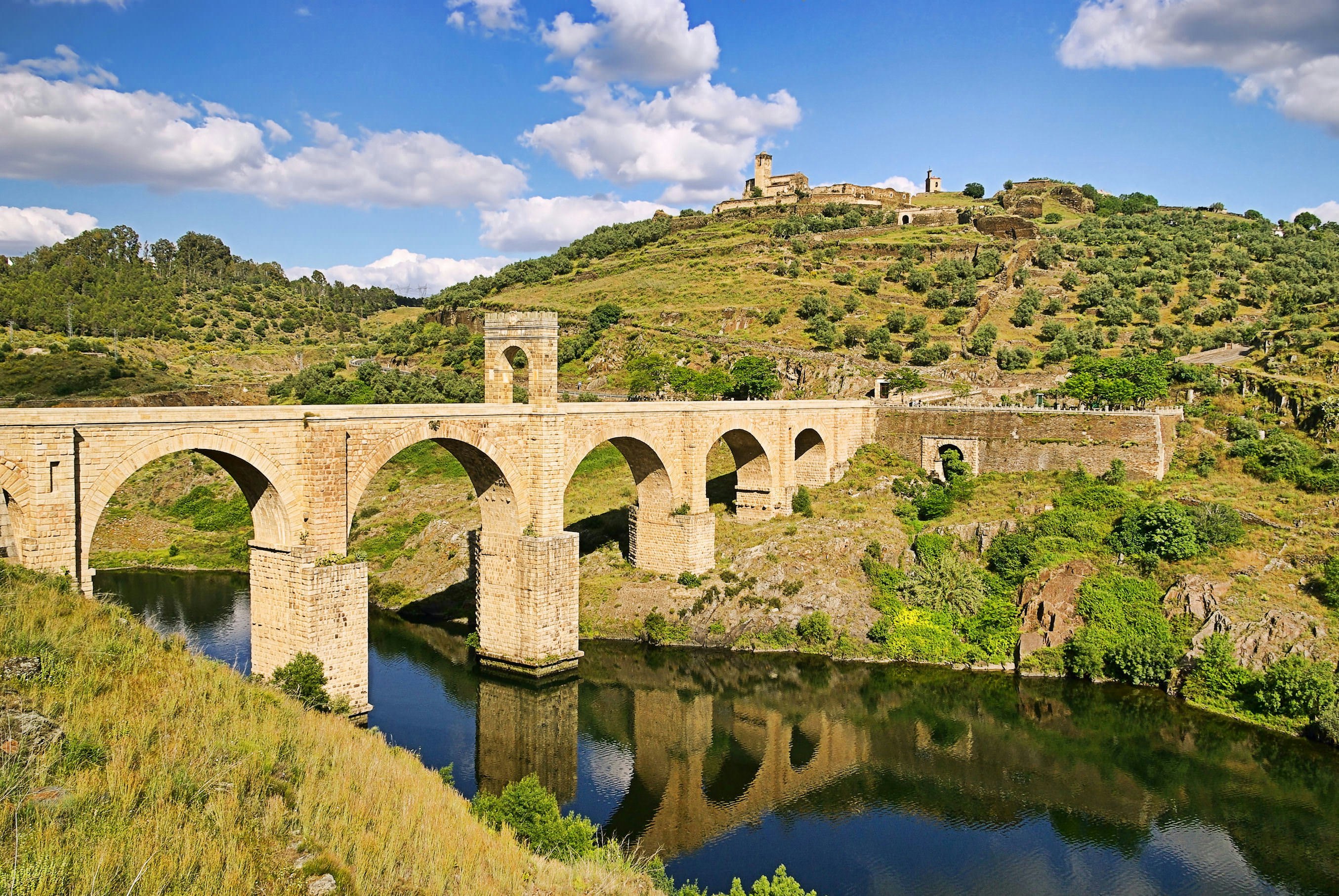
The Arch de Trajan, part of the ruins of the Roman city of Timgad in the present-day African country of Algeria. Rostasedlacek/Shutterstock
At its height, the Roman Empire covered roughly 5 million sq km, stretching west to east from Portugal to Mesopotamia and north to south from Scotland to Sudan. Wherever the Romans went, they took their architectural style with them, building towns, temples, theaters and baths and spreading Roman culture to the furthest reaches of the empire.
It has been estimated that there were nearly 1400 cities in the Roman Empire, with countless smaller settlements across the territory. Many of these ancient urban areas have survived and become popular tourist attractions. But with so many Roman sites to visit, some of them inevitably slip beneath the radar. Here’s our pick of the overlooked gems of the Roman Empire, where you can immerse yourself in this fascinating culture and explore the remarkable diversity of Roman architecture and engineering without the crowds.
1. Timgad, Algeria
Best for urban planning
Roman cities were carefully designed for ease of use, with streets laid out in a grid pattern around the central forum, where important public institutions such as temples and marketplaces could be found. Traces of this expert urban planning can be found at many Roman sites, but arguably it can be seen at its best at Timgad. Here, the remains of the city cover a huge area, perfectly divided into four large quarters by two ancient roads running north to south and east to west, with smaller streets branching off – always at perfect 90 degree angles. With well-preserved triumphal arches, baths and an amphitheater, Timgad is a stunning example of the ideal Roman city design.
Planning tip: The modern town of Timgad is a small place. It is not well served by public transport, though occasional buses do run from the city of Batna 40km (24 miles) to the west. If you’re staying in Algeria’s third-largest city, Constantine, the easiest way to reach Timgad is by taxi, a journey that takes a little over two hours.

2. Sagalassos, Türkiye
Best for water features
As the Roman Empire spread eastward into Anatolia, it often incorporated the cities of existing cultures, adding to them and giving them a Roman flavor. Sagalassos began life as a Pisidian city some centuries before the Roman Empire arose, but it was absorbed into the empire in the first century BCE and became an important regional capital in the Turkish mountains. Impressive public buildings sprang up throughout Sagalassos, including the nymphaeum of Antoninus Pius: a splendid ornamental fountain with intricately decorated archways and niches for statues of emperors and gods. The fountain has been restored, and it’s breathtaking to see this feat of Roman engineering in action today as torrents of water flow into a large turquoise pool – reminiscent of much later fountains of French chateaus and English stately homes.
Planning tip: No public transport serves Sagalassos, though you can get a dolmuş (jitney) to Ağlasun, a small town at the base of the hills. From here, it’s a gruelling 7km (four-mile) trek uphill to reach the site, or – perhaps more appealingly – you could hop in a taxi to cover the distance in just 15 minutes. Alternatively, it’s easy to reach Sagalossos by a hired car, and it’s doable as a day trip from the popular tourist site of Pamukkale.

3. El Jem, Tunisia
Best for imagining gladiator matches
If we’re talking about Roman gems, we can’t resist mentioning El Jem in Tunisia. Silly pun aside, El Jem is still well worthy of a place on this list: it’s one of the largest and best-preserved amphitheaters surviving from the Roman era. A little smaller than Rome’s Colosseum, El Jem has just a fraction of the visitors. This makes it an ideal destination if you want to explore the vast corridors and arena once trodden by the gladiators of Roman North Africa before imagining yourself a spectator about to witness what was one Rome’s most popular – and bloody – form of entertainment.
4. Orange, France
Best for a performance
Roman entertainment wasn’t all gladiator fights: drama performances were extremely popular too, with theaters – often following the Greek architectural model – across the Empire. One of the best preserved, though curiously under-visited, is in Orange, France. Dating to the first century CE, the theater can hold as many as 7000 spectators in the 34 semi-circular rows of seating. It is unusual among European Roman theaters because its scaenae frons (backdrop wall) still survives, although with limited decoration. The theater is now open as a tourist attraction and also functions as a venue for opera concerts.
Planning tip: Try to catch a concert at the theater; it’s the best way to truly appreciate the design, which is a masterpiece in acoustics.

5. Jerash, Jordan
Best for making tracks
In the Roman era, Jerash was one of 10 cities that made up the Decapolis – an island of Roman culture in a region on the empire’s eastern fringes. Jerash is today the best preserved of the Decapolis cities. It's worth visiting in particular for its beautiful oval-shaped forum, a rare and elegant variant on the square found in most cities. From the forum, the city’s main road heads northward: examine the paving stones beneath your feet and you’ll easily spot ruts worn into the road from the wheels of vehicles that made their way along the street in centuries past. It’s a fabulous reminder that ancient Jerash was a living place, used by hundreds of thousands of people over the years.
6. Bulla Regia, Tunisia
Best for everyday life
At many Roman sites, it’s the grand monumental structures that survive the centuries, leaving little trace of the lives and homes of ordinary Roman citizens. At Bulla Regia, it’s different: here, the inhabitants of the town built their homes underground to escape the summer heat, and many of these subterranean villas are remarkably preserved. Exploring the rooms of these houses, you’ll get a real sense of what it was like to live in the Roman Empire, in villas replete with gorgeous mosaics, bathhouses and fountains.
Planning tip: As the Romans knew, it’s very hot at Bulla Regia in summer. Try to time your visit for the spring or autumn instead: the site is very pleasant in April, May and September.
7. Ostia, Italy
Best for bathhouses
Just 25km (15 miles) from Rome lie the remains of Ostia, which during the days of the empire was the principal port serving the capital. Despite the well-preserved state of the ruins, Ostia has few visitors compared to those that flock to nearby Rome. This means that you can explore the ancient city in relative peace, with particular regard to the bathhouses. It’s clear from the sheer number of them – there are 26 baths complexes here – that this was an important part of Roman society. There’s much to admire, with the marvelous mosaic in the Baths of Neptune a particular highlight.
Planning tip: Getting to Ostia from central Rome is easy: pick up the Rome-Lido railway line from the Porta San Paolo station and ride the train to the Ostia Antica stop. The journey takes about 35 minutes.
8. Dara, Türkiye
Best for learning about water storage
The transportation of water for all those baths was a necessity throughout the Roman Empire, achieved through feats of engineering such as the Pont du Gard aqueduct in France. Once water had arrived at its destination, it needed to be stored, resulting in the development of cisterns – essentially underground reservoirs. The most-visited example is arguably the Theodosian cistern in Istanbul, but in Türkiye’s far east are the little-known cisterns of Dara. Descending into these two immense underground chambers supported by monumental pillars can feel eerie, but it's ideal for gaining some perspective on the sheer scale of Roman ingenuity. What’s more, you’re likely to have the entire site to yourself (bar a few lizards) and can also take in the extensive necropolises dotted around the ancient town.

9. The bridge of Alcántara, Spain
Best for getting from here to there
One reason the Roman Empire survived so long was its remarkable infrastructure: the construction of a huge network of roads stretching across its territory meant that news (or armies) could travel quickly, allowing a rapid response to any brewing trouble. The need for direct routes often meant crossing obstacles such as valleys or rivers, and Roman engineers soon developed efficient ways of designing bridges that were, to put it mildly, built to last. The bridge of Alcántara in Spain is just one example: a tremendous 45 meter (147ft) high stone bridge, running for a length of 182 meters (596ft) and supported by immense pillars. It’s a testament to Roman skill that this bridge was built in the second century and is still in use today.
10. The Antonine Wall, Scotland
Best for frontier living
Hadrian’s Wall was famously built to guard the northern fringes of the Roman Empire, and along its span visitors will find the impressive garrison forts of Vindolanda and Housesteads. But around 140 CE, the empire pushed at its boundaries and advanced some 100 miles farther north. This new frontier in present-day Scotland, known as the Antonine Wall, consisted of an earthwork barrier stretching between the firths of Clyde and Forth, periodically dotted with fortresses to defend the empire against the Caledonians to the north. The Antonine Wall was soon abandoned, but traces of it can still be found, illustrating a time at which the Romans found themselves overexpanded and forced to retreat.




